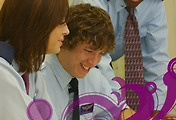Civil Air Regulation, PART-1
Governing
LICENSING OF AIRMAN
Administrative Order No. 60
Series of 1956
1.2 GENERAL RULES CONCERNING LICENSES
a) Flight crew members:
Student pilot;
Private pilot;
Commercial pilot;
Airline transport pilot;
Flight instructor pilot;
1.2.5 Validity of license
24 months for the student pilot license;
24 months for the private pilot license;
12 months for the commercial pilot license;
12 months for the flight instructor pilot license;
6 months for the airline transport pilot license;
1.2.5.1 Where the holder is forty years of age (40 yrs old) or over, the twenty-four (24) months specified for the student, private, glider, private helicopter, parachute technician and free balloon pilot licenses shall be reduced to twelve (12) months.
2.1 RATINGS FOR PILOTS AND THE PRIVILEGES RELATING THERETO
2.1.1 Aircraft rating shall comprise;
a) category rating;
b) class rating;
c) type rating;
2.1.1.1 Category ratings shall comprise;
a) aeroplane;
2.1.1.2 Class ratings shall comprise;
a) single-engine land;
b) single-engine sea;
c) multi-engine land;
d) multi-engine sea;
2.1.1.3 Type rating shall comprise;
a) a rating for each type of aircraft;
b) a rating for each unconventional type of aircraft regarding of gross weight.
2.1.4 Circumstances in which an instrument rating is required – A holder of a private or commercial pilot’ license shall not act as pilot-in-command of an aircraft under instrument flight rules (IFR) unless he has received proper authorization from the Administrator. Proper authorization shall comprise an instrument rating card issued by the Administrator or his authorized representative.
2.2 STUDENT PILOT
2.2.2 Age – The minimum age for obtaining a student pilot’s license shall be sixteen (16) years for powered aircraft.
2.2.4 Education – An applicant shall be able to read, write, speak and understand the English language otherwise an appropriate limitation will be placed on the student pilot’s license.
2.2.5 Medical fitness – A student pilot shall establish his medical fitness on the basis of compliance with the following medical requirements;
Physical requirement No.3
Visual requirement No.3
Color perception requirement No.2
Hearing requirement No.4
2.2.7.2 Requirements for first solo – A student pilot shall not operate an aircraft in solo flight until:
a) He has passed a written examination on the subjects:
Civil Air Regulation
Airframes and power-plants (on specific type of aircraft)
Emergency procedures
Basic ATC procedures
Flight procedure and check
b) He has been found competent by a flight instructor to make such flight and authority therefore has been endorsed by the Administrator or his flight instructor. Under the circumstances shall a student pilot fly solo before he has logged eight hours dual flight; and
c) He has been given instructions in the prevention of and recovery from power-on and power-off stalls entered from ail normally anticipated flight altitudes.
2.3 PRIVATE PILOT
2.3.2 Age – The minimum age for obtaining a private pilot’s license shall be seventeen (17) years.
2.3.5 Medical fitness – Applicant shall have established his medical fitness and the basis of compliance with the following medical requirements;
Physical requirement No. 3
Visual requirement No. 3
Color perception requirement No. 2
Hearing requirement No. 4
2.3.5.1 In the case of an applicant for instrument rating, the assessment of hearing acuity shall be made on the basis of compliance with:
Hearing requirement No. 1
2.3.6 Knowledge – An applicant for a private pilot’s license shall pass the written examination embodying the following subject:
a) Emergency procedures;
b) Civil air regulations;
c) Aviation meteorology;
d) Elementary air navigation;
e) Elementary theory of flight;
f) Airframes and power-plants on specific type of aircraft;
g) Flight procedures and checks;
h) Communications and air traffic control procedures.
2.3.7.1 In spinnable aircraft he shall have at least 30 hours of solo flight time and at least 10 hours of dual instruction time given by a rated flight instructor or at least 20 hours of solo flight time and at least 10 hours of dual instruction time if he has satisfactorily completed a course of approved training.
a) At least two hours of the dual instruction time shall have been after solo.
b) The dual instruction shall include instruction in the prevention of a recovery from power-on and power-off stalls entered from all normally anticipated flight altitudes.
2.3.7.3 In either spinnable or non-spinnable aircraft he shall have at least 3 hours of solo cross-country flight time which shall included at least one solo flight at a point not less than 50 nautical mile distant from the point of departure with at least 2 full-stop landings at different points along the course. The three hours of cross-country flight may be included in the total of forty and thirty hours specified in 2.3.7.1.
2.3.8 Skill – Applicant shall demonstrate his ability to perform:
a) A series of 3 landings from an altitude not to exceed 1,000 feet with engine throttled and a 180-degree in direction, the aircraft touching the ground in normal landing altitude beyond and within 300 feet of a designated line or point. At least one landing must be accomplished from a forward slip;
b) Three (3) moderately banked around-pylon figure eights, variation in altitude not to exceed 200 feet;
c) A 720-degree power turn in each direction in a banked altitude of more than 45 degrees variation in altitude not to exceed 200 feet;
d) Climbing and gliding turns at a minimum controllable speed;
e) Recovery from power-on and power-off stalls entered from all normally anticipated flight altitude;
f) Emergency procedures.
'Pilot Manual' 카테고리의 다른 글
| 제1장 비행의 역사(FAA PILOT HANDBOOK) (0) | 2019.12.26 |
|---|---|
| 필리핀 항공법규 개정판 (2008년 6월 23일) - 면장관련사항 (0) | 2009.02.19 |
| 비행수업 과정의 순서는...? Discovering Aviation (0) | 2008.12.01 |
| 비행 수업은 어떻게 진행되나? Discovering Aviation (0) | 2008.12.01 |
| FAA에서 발행한 Pilot Manual - 꼭 봐야할 것 ㅎㅎㅎ (0) | 2008.10.16 |




댓글